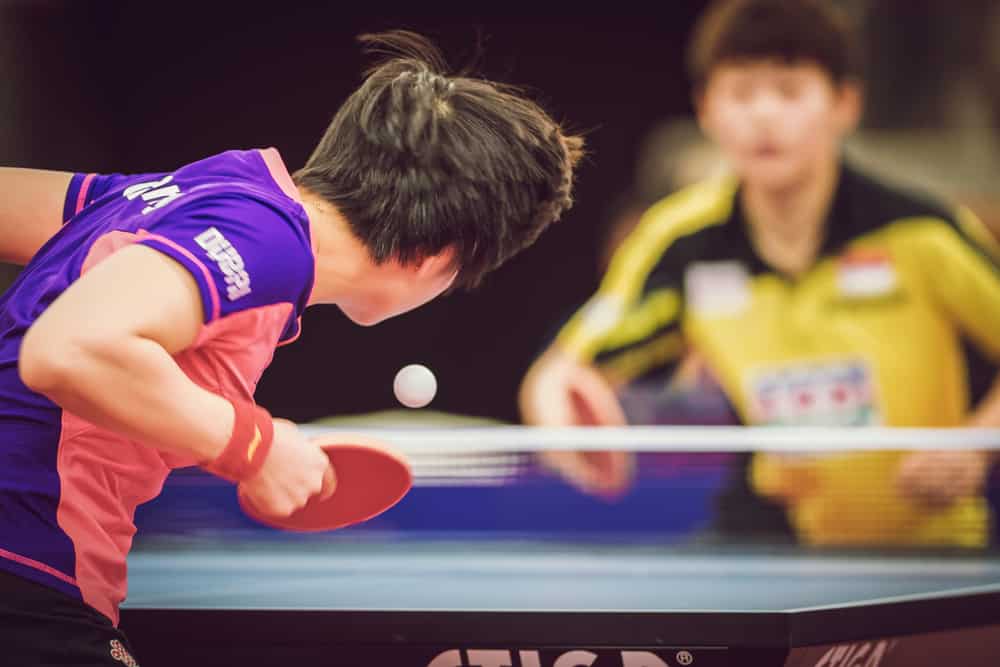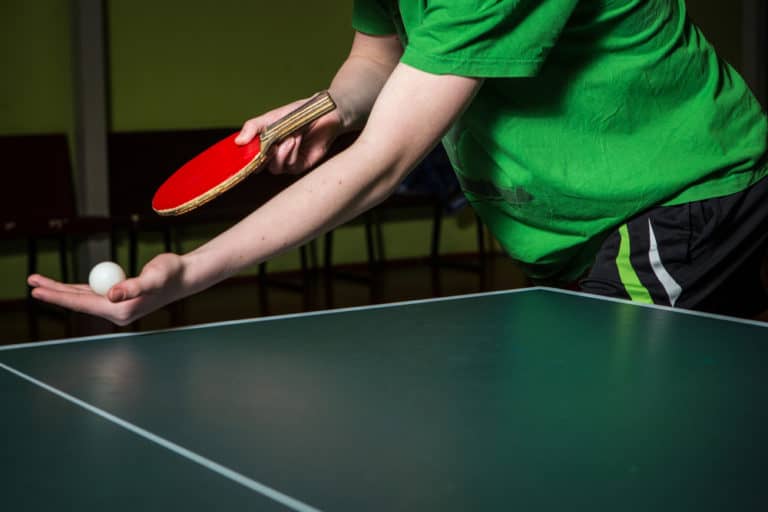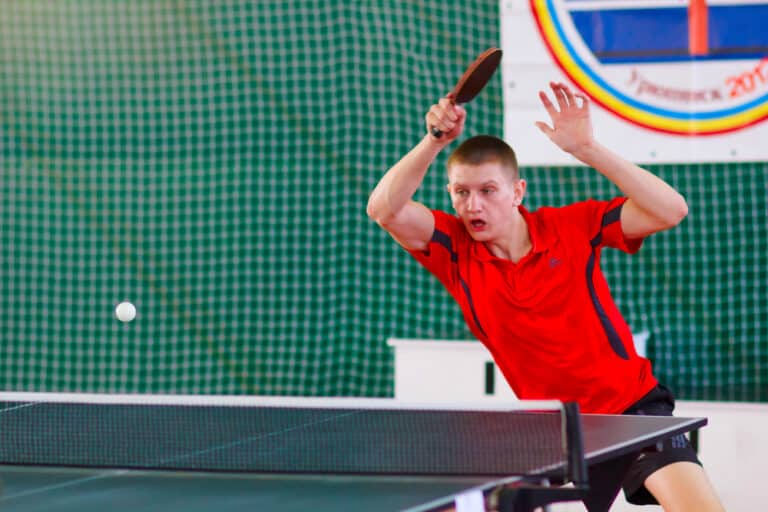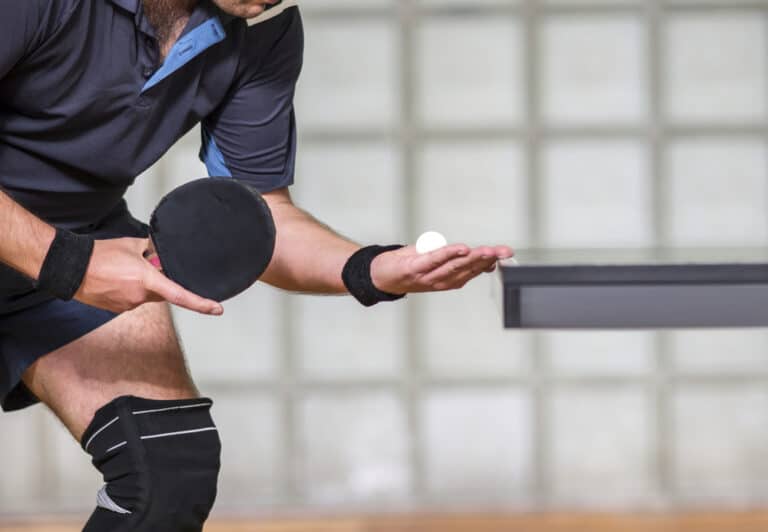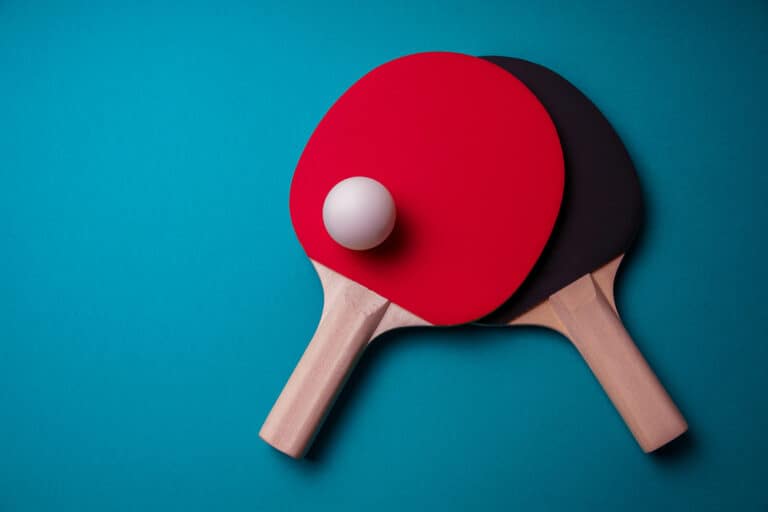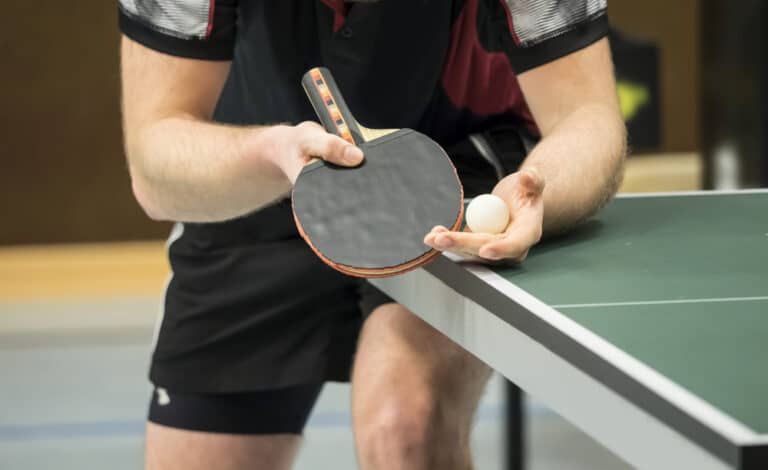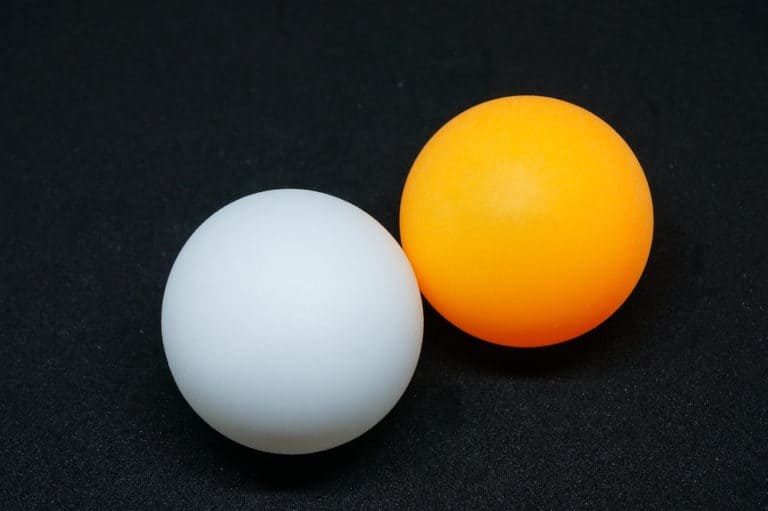How Do You Counter Heavy Top Spin In Table Tennis?
Countering a heavy topspin shot in table tennis can be tricky. The spin on the ball makes it challenging to control the angle at which it’s returned. Its speed increase after the bounce can also catch players by surprise. Countering it is relatively easy with some practice, however. And once you learn how, you’ll be able to face it confidently.
In table tennis, you can counter heavy topspin in a few ways. Adding topspin to your shot forces your opponent to deal with a topspin return while using backspin increases the ball’s spin and disrupts your opponent’s rhythm. Blocking is the simplest method and is quite useful at all skill levels.
In table tennis, heavy topspin can be tricky to counter due to the speed change when the ball bounces. Knowing what kind of return shot to use is essential. Otherwise, this type of shot might seem impossible to return. Whether you’re learning to play or simply brushing up on your knowledge, this guide gives you everything you need to know about countering heavy topspin in table tennis.
How To Counter Heavy Top Spin
In table tennis, topspin is the most common of all the ways players can spin the ball when hitting it. A player adds topspin to the ball by slicing the racket forward over the top of the ball. This causes it to spin towards the opponent. It increases the power that can be applied to the ball when hit. It also causes the ball to speed up when it bounces on the table.
Topspin is the most common of all the ways players can spin the ball when hitting it. As it is the most common spin used, it’s essential to know how to counter it. Countering heavy topspin can be done by adding your own spin to the ball or simply blocking.
Countering Heavy Topspin With Topspin
Heavy topspin shots can disrupt your return’s timing or cause your return shot to go over the table. It can disrupt your timing by speeding up after bouncing, causing you to miss or hit the ball incorrectly. Hitting the ball wrong can create an opening for your opponent to take advantage of.
The topspin on the table tennis ball causes it to deflect at a higher angle off your racket. Typically, topspin shots also have more power behind them. Heavy topspin can cause your return shot to travel too far and miss your opponent’s side of the table. This means that the ball’s force hitting your racket and the extra height can cause your return to miss the table.
Countering heavy topspin with topspin makes it possible to force your opponent into the same position. To counter topspin, you need to angle your racket forwards to lower your return’s height. Slice the top of the ball and counter the spin with your own topspin. Angling your racket in the correct position will also allow you to add more power to your shot.
Typically, a player will stand further away from the table when using heavy topspin. This enables them to add more power to their topspin shots. Forehand topspin counters are usually more powerful than backhand top spin counters.
Countering Heavy Topspin With Backspin
A backspin return is an excellent counter to your opponent’s topspin shot. It uses the topspin of your opponent’s shot to create even more spin on the ball. To counter heavy topspin with a backspin shot means you’ll need to slice the underside of the ball. Because the racket is angled backward, you’ll need to ensure it doesn’t cause the ball to go too high.
Backspin is created when a racket that is angled backward hits a ball. It’s also called a slice because the racket slices across the bottom of the ball, causing it to spin backward. Backspin shots are much slower than topspin but can also be trickier to return for your opponent.
When your opponent uses heavy topspin, a backspin return can throw them off by changing the pace of the rally. Your opponent might expect a fast return because of the topspin and may stand further from the table in preparation. A backspin shot is slower, has less power, and slows down even more after it bounces.
When a backspin shot hits the table, it slows down. It slows down because the spin is opposite from the direction it’s moving in. There is also another reason for it being a great counter. Backspin is challenging to return because it wants to travel at a lower angle than a standard shot. This can cause your opponent’s return shot to hit the net.
On the other hand, most players know that this happens when returning backspin shots. Therefore, your opponent may hit the ball too high when trying to adjust the angle of their racket. This can allow you to take advantage and perform a smash to win the point.
There is something to watch out for, however. Because you must angle your racket backward, there is a chance that your return may be too high or too powerful. It can allow your opponent to perform a smash, or it can miss the table. The heavier the backspin you can apply to your return shot, the harder it will be for your opponent to retaliate.
Many defensive players use backspin as their spin of choice. It makes it difficult for the opponent to put too much power behind their shots. This is because with more power comes less control, and control is necessary when countering backspin.
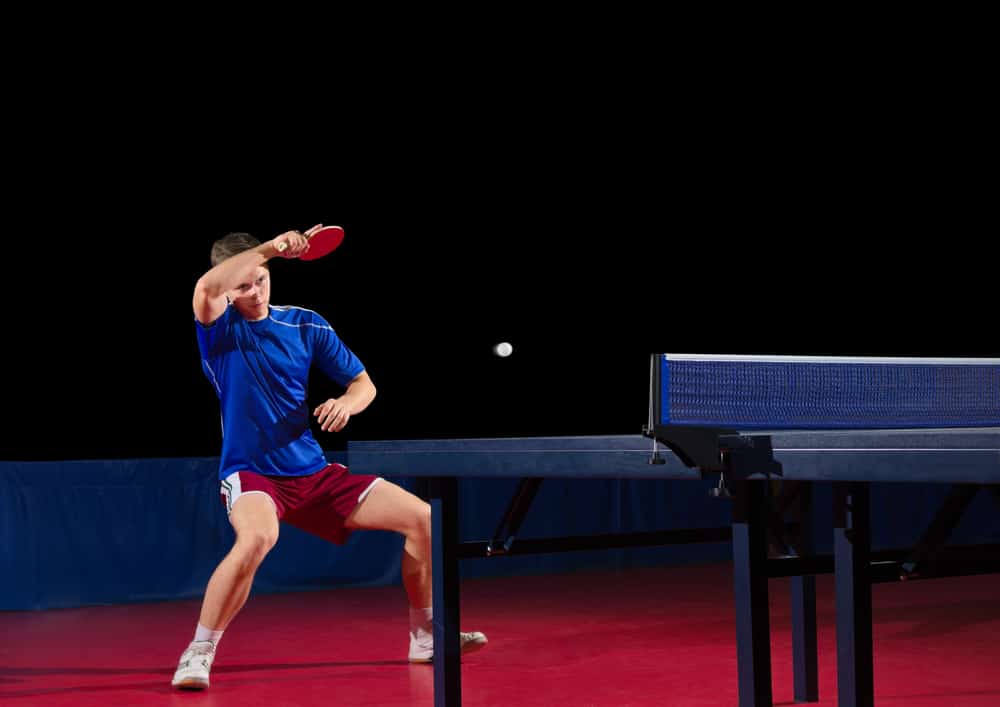
Countering Heavy Topspin By Blocking
Blocking is another valuable method for countering heavy topspin. To block, the player must stand close to the table and return the ball quickly after it bounces. It’s important to remember to tilt your racket forward to account for the topspin. If you don’t, the ball will go too high, either missing the table or giving your opponent the advantage.
Blocking uses the ball’s speed against your opponent when countering heavy topspin. Because you return the ball so soon after it bounces and speeds up, the increased force is applied to your return. To block a topspin shot, stand squarely in front of the table and open your backhand. The speed and timing of the return may surprise your opponent.
Don’t overextend your arm when you block, but angle your racket to choose the direction of the return. A well-placed block can easily catch your opponent off guard if they are expecting you to back away and swing at the ball. Blocking is an essential skill to practice when learning to play table tennis. It is the easiest to learn and useful regardless of your skill level.
Conclusion
Facing a heavy topspin shot can be intimidating. However, there are several ways to counter it, such as topspin, backspin, and blocking. Returning your opponent’s topspin shot with a topspin shot of your own can force your opponent into the same situation. Backspin counters can disrupt your opponent’s rhythm and give you control of the rally. Blocking is the simplest, and its surprising speed is advantageous.

